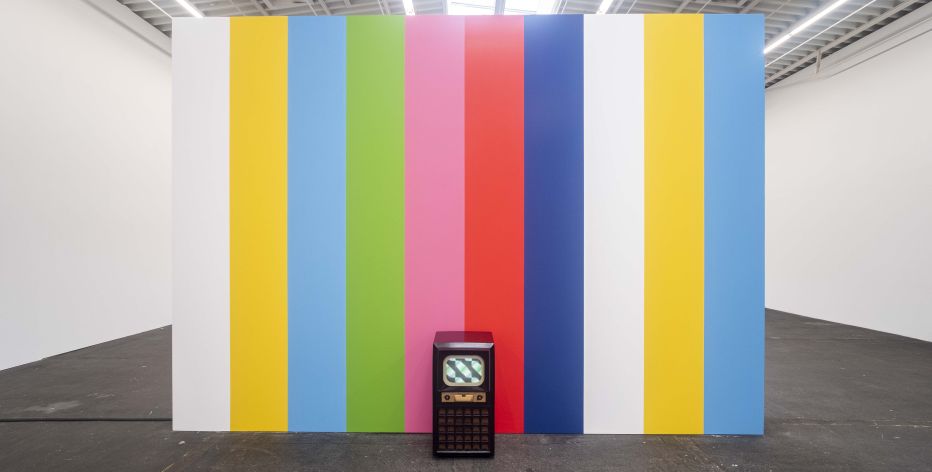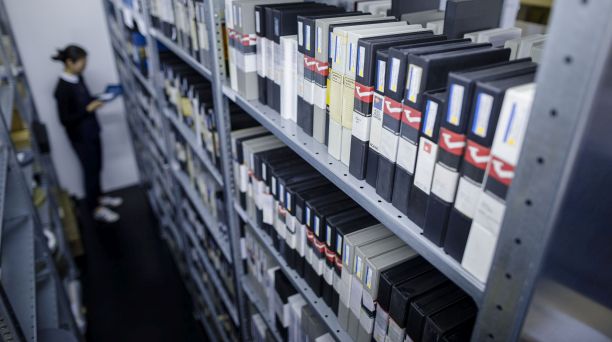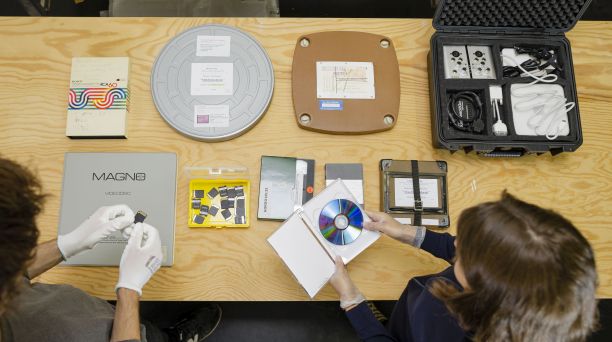IN PREPARATION is a series that gives an up-close view into how the Nationalgalerie (National Gallery) is preparing its collection for presentation in the new building at the Kulturforum. While the first two parts showed how major works of art were restored in public, part 3, the MediaLab, is dedicated to a whole collection complex: the truly diverse media artworks from the Nationalgalerie collection.
The IN PREPARATION series is supported by the Federal Commissioner for Culture and the Media.
Special knowledge, technical equipment and infrastructure are necessary to preserve and study media artworks. The MediaLab in the Hamburger Bahnhof is the place to study media artworks and prepare them for presentation in the Neue Nationalgalerie – Museum des 20. Jahrhunderts.


